Quite often, babies roll off the tables where they are swaddled, so the procedure is best performed in a safer place, for example, on the couch. It is necessary to foresee a possible fall and lay a carpet next to the sofa.
2 Older child
For safety, the child needs to buy socks that have rubber inserts in the sole, they reduce slipping, and the child will not fall on the slippery parquet floor. It is recommended to spread rugs in the children's room. In addition, it is advisable to wrap the sharp corners of all furniture and door jambs with a cloth. It is necessary to remove chairs or a table from the window so that the baby cannot climb onto the windowsill.
Parents should watch for the following symptoms in the coming weeks in children who have had a head injury. Your child may vomit once, but if vomiting continues, return to the doctor or the nearest hospital emergency room. Illness or fatigue. At discharge, we encourage your child to rest and sleep. Do they know familiar names of people? If the answers are non-standard and your child seems more confused or more forgetful than usual, contact the doctor or nearest emergency room immediately.
- Headache.
- Your child may have a headache.
- Give paracetamol every six hours if needed to relieve pain.
- If the pain is not relieved by paracetamol, see your doctor.
![]()
3 If the child fell
If the child fell and hit his head, do not immediately panic, you need to concentrate on controlling the consequences of the injury.
If the injury is mild and the brain is not damaged in any way, the child has only a small abrasion or bump. The baby cries for half an hour, then calms down and behaves in the usual way. In this case, there is no need to consult a doctor.
Behavioral and emotional symptoms
Being more demanding than usual and easily frustrated, being more fearful and anxious, changing sleep patterns caused by irritability.
Cognitive, thought and communication symptoms
Your child may experience some or all of the following: Slowness with thinking, understanding, and responding to questions or commands. If your child develops slurred speech or speech that is unclear, return to the doctor or nearest hospital emergency room immediately. Difficulty thinking about the right words.- Problems of concentration.
- Difficulties with memory.
- Difficult speech.
If a concussion occurs, then the child may experience such processes as loss of consciousness, vomiting (up to 3 months of age), pallor of the skin, and the presence of cold sweat. The child's appetite worsens, drowsiness and lethargy appear. If he is older, he may complain of pain in the head and tinnitus.
One of the most severe injuries is. In such a situation, the child may lose consciousness for a long time (more than 1 hour), there may be disturbances in the functioning of the organs of the respiratory and cardiac systems.
Cognitive fatigue is not associated with intellectual abilities child or physical energy levels and can lead to behavioral problems, mood swings and educational difficulties. If your child is experiencing cognitive fatigue, they may need additional rest periods and a gradual return to activities such as school that require periods of increased concentration or thinking.
Children's Health Fact Sheet: Head Injury - Return to Sports. Recommended at least one week away from school for children who have sustained a head injury that requires medical attention. It is important to tell the school about your child's head injury. If your child is tired, allow them to gradually return to school and other activities. An individual plan will be recommended for your child as every head injury is different. Discuss the details with your child's care team.
If a child has a skull fracture, you may notice blood from the nose or ear, and bruising around the eyes may also occur. These symptoms appear a few hours after the fall.
The most important rule is to carefully monitor the behavior of your child after an injury. If there are doubts about his positive health, then you should consult a doctor.
Warning symptoms after hitting your head: when to see a doctor
Your child should avoid sports and activities that involve height and speed, as well as any other activity where they may be exposed to another head injury. Your child may participate in the sports listed below after six weeks, however this will be determined by the treating medical team when your child visits the clinic for a follow-up appointment.
After a head injury, your child's reaction time and thinking may be slower, and this may put them at risk for further injury. In sports and occupations of risk. Make sure your child always wears a helmet when cycling or skateboarding.
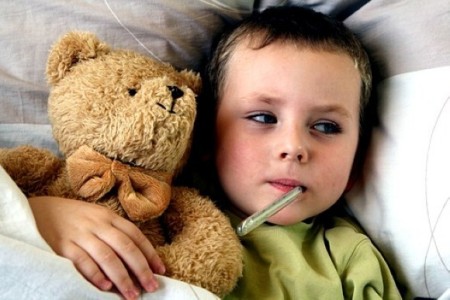
4 What can you do yourself?
If there is no serious damage to the skull, a cloth moistened with cold water, you can also wrap ice in a cloth. This procedure helps to reduce pain, stop bleeding and reduce swelling.
It is important to encourage a gradual return to physical activity. Encourage your child to participate in gentle physical activities such as. Swimming with exercises. . If your child's behavior is very different from their normal behavior, or if the pain persists, contact your doctor or the nearest hospital emergency room.
Disclaimer This information is intended to support, not replace, discussions with your doctor or healthcare professionals. The authors of these consumer health information handouts have made significant efforts to provide accurate, up-to-date and user-friendly information. The Royal Children's Hospital Melbourne is not responsible for any inaccuracies, misleading information or the success of any treatment regimen detailed in these handouts.
Bleeding can be stopped by another method - attach a dense piece of dry, clean tissue to the sore spot. If blood appears on it, then another layer of matter should be added and held for 15 minutes. If after a while the bleeding has not stopped, then you should immediately call a doctor.
After the injury, whatever degree it may be, the child should be provided with calm, but not allowed to sleep for an hour in order to understand exactly what consequences he has after a fall.
The information contained in the handouts is updated regularly and therefore you should always check that you have the most current version of the handout in mind. It is your responsibility, the user, to ensure that you have downloaded the most current version of the Consumer Health Information Handout.
Should your child see a doctor?
Large lumps can occur with minor injuries. This is due to the fact that there is a large amount of blood on the scalp. For the same reason, small cuts on the head can bleed a lot. Bruises on the forehead sometimes cause black eyes 1 to 3 days later. It is caused by the spread of blood under the influence of gravity. Only 1% to 2% of children with head injuries will develop a skull fracture. Most often, there are no other symptoms other than a headache. Headache occurs at the site where the head was affected. Most skull fractures occur without any trauma to the brain. They heal easily. A mild traumatic brain injury that changes the way the brain works normally. It is usually caused by a sudden blow or thrust to the head. Most children hit or headbutt without causing a concussion. The most common symptoms are short-term confusion or memory loss. It happens after an injury. Other signs of a concussion may include headache or vomiting. Dizziness or stupefying behavior may also be signs. A person doesn't need to be knocked out to have a concussion. After a concussion, some children experience persistent symptoms. These may include headaches, dizziness, or difficulty thinking. There may be school problems or emotional changes. These symptoms may continue for several weeks. Impairments Injuries Serious are uncommon. This includes bleeding, bruising, or swelling in the brain. They are suspected of having symptoms listed below: Difficulty waking up or staying awake or Acting or embarrassing speaking or Consensual speech or Evenness of arms or legs or Withdrawal is unstable. These symptoms are an emergency. Treating a concussion requires both a physical remnant and a remnant of the brain. Free rest means a gradual return to full learning and school attendance. Physical rest means a gradual return to normal activities, work and classroom activities. Sports-related exercises should have phased plan"return to the game". Progress through the stages should be monitored by a physician or sports coach. All: the pain is very bad. This forces your child to do all the normal activities. Hitting a hard object such as a golf club. from a dangerous height. You think that your child has a serious injury. You think your child should be noticed, and the problem is relevant. You think your child needs to be seen, but the problem is not urgent.
Calling a doctor while working in the office
Expected emergency time.- Head injury.
- Includes scalp, skull and brain.
- Sorrowful injury.
- Most head injuries only damage the scalp.
- Examples are cutting, scratching, bruising or swelling.
- Children often fall and hit their heads as they grow up.
- This is especially true when a child is learning to walk.
- If symptoms occur, such as a headache, the child needs to do less.
- Within 24 hours, they can try again to make the next level.
- Mild: Your child feels pain and talks about it.
- But pain doesn't keep your child from doing any normal activities.
- School, play and sleep do not change.
- Modification: Pain causes your child to perform normal activities.
- This may wake him or her up from sleep.
- Age less than 1 year.
- The skin is open or gaping and may need stitching.
- Bleeding does not stop after 10 minutes of direct attack.
- Large dent in the skull.
- Dirty incision and no tetanus removed for more than 5 years.
- Clean cut and no tetanus for over 10 years.
- Do you have any other questions or concerns.
If the child is unconscious after the injury, the ambulance is already on its way, then you should lay him on his side so that the vomit does not enter the respiratory system. If there is a suspicion that, in addition to the head, the child has a spinal injury (for example, when falling from a height), then it must be turned very carefully so as not to cause additional injury.
Traffic and latency can be affected by local events or bridge closures. Please check the current conditions traffic and warning notices on the Seattle Department of Transportation website. Wait times may also vary depending on the severity of the conditions we treat. If your child's illness or injury is life-changing, give us a call.
What you should know about mild head injuries: Most head injuries only cause swelling or bruising of the head. Here are some care tips that should help. Start it after 2 hours of sleep. Then check how he walks and talks. Cause: Always increases the risk of bleeding. Also, pay attention to any changes in your child's normal behavior. Retrieval: If you're worried, wake your child up once during the night. Check how he walks and talks. After 48 hours, return to your normal sleep routine. You think that your child should be noticed. Your child is getting worse. And remember, see your doctor if your child develops any of the Tell Your Doctor symptoms.
- The main symptom is pain.
- The skull bone protects the brain from injury.
- The mildest brain injury is a concussion.
- Most of them also turn out great.
- If there is a scratch or cut, wash it with soap and water.
- For any bleeding, apply direct pressure to the wound.
- Use a gauze pad or clean cloth.
- Press for 10 minutes or until bleeding stops.
- Use a cold pack or an ice bag wrapped in a damp cloth.
- Do this within 20 minutes.
- Difference: Prevent big chunks of "goose eggs".
- Also helps with pain.
- Repeat after 1 hour, then as needed.
- Keep a close eye on your child for the first 2 hours after an injury.
- Let your child lie down and rest until all symptoms are gone.
- Note.
- Mild headache, mild dizziness and nausea are common.
- Put the baby to sleep if he wants to, but keep him close by.
- Offer only clear liquids to drink if he vomits.
- Allow regular diet after 2 hours.
- Use as needed.
- Exception: Do not give until 2 hours after injury without vomiting.
- Never give aspirin to children and teenagers.
- Basically, sleep in the same room as your child for 2 nights.
- In case: if there is a problem, you will know it if you are nearby.
- Problems include a bad headache, vomiting, or confusion.
- Most head injuries result in a head injury.
- A deep headache usually clears up after 24 hours.
- Pain in the scalp at the site of impact may last up to 3 days.
- The swelling may take up to a week.
- The pain or crying becomes severe.
- 2 times or more.
- Your child becomes difficult to wake up or confused.
- Not talking or talking is not normal.
- Head-ad lasts more than 24 hours.
When a child appears in the family, adults must constantly control all his actions and take care of him. In our life, there are very often cases when a child falls out of a stroller, his bed, etc., while receiving a traumatic brain injury. It is necessary to foresee all possible outcomes of events and make sure that the child does not hit his head on heavy objects.
Such injuries are of 2 types: open and closed. Open means violations of the meninges. When the hard shell is broken, the injury is called penetrating. In such a situation, the child's brain is under great threat. Infection is possible, which will greatly aggravate the condition of the child. A closed craniocerebral injury carries milder consequences, since the head cover remains intact.
Closed injuries come in 3 degrees of difficulty: mild, moderate and severe. To determine severity, the Glasgow coma scale must be used. If a child on such a scale received from 13 to 15 points, then the injury is mild, if from 9 to 12, then the degree is average, and if from 3 to 8, then the degree is complex.
First of all, you need to contact a pediatric traumatologist, a neuropathologist and a neurosurgeon. If you do not resort to the help of specialists in time, the child may experience a coma, the risk of death increases. Severe injuries are treated exclusively in a hospital.
To diagnose a traumatic brain injury, it is necessary to undergo neurosonography. During this study, the structure of the brain is subject to examination. This method is used for a patient from 1 to 1.5 years.
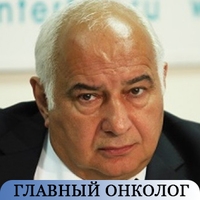
5 Treatment and consequences of traumatic brain injury
The specialist, after the diagnosis is made, prescribes medication.
It includes drugs that help eliminate, help reduce intracranial pressure, correct metabolism, etc.
You can improve cerebral blood flow with the help of drugs such as Cavinton, Complamin, etc. The use of ascorbic acid will help strengthen the vascular wall, and Reserpine or Raunatin will cope with the normalization of vascular tone, which are prescribed only by a specialist in the correct dosage.

If the injury is mild, all the recommendations of the doctor were followed, then after recovery, sometimes only a feeling of fatigue and irritability may occur. The child becomes a little inhibited, there is a tendency to repeat the injury. Such phenomena may cause failures in his intellectual development in the future.
Mortality in such injuries is quite high and reaches 30%. After them, children often have disorders in the functioning of the organs of the musculoskeletal system, there are deviations in the psyche, in the future the child may become disabled.
If there was an open form of injury, then inflammation of the membranes of the brain may occur, such a process most often ends in death.
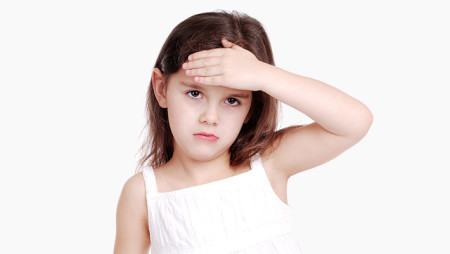
6 Prevention of childhood injuries
In infancy, you should constantly monitor all the actions of the child. AT game form it is necessary to explain to him how to take care of himself and what not to do.
If a child is involved in any sports section, he should follow the safety instructions of his coach.
AT winter time a year, a child can slip and fall on ice, so parents should provide him with high-quality shoes with a reliable tread.
Parents should not leave their child younger age unattended in any situation as long as it is prone to injury.
Danger lurks everywhere for young children and their parents, and we are talking not only about brisk grown-up children who have already stood on their feet and began to explore the world. Babies can also suffer greatly due to the carelessness of the mother. Babies often fall off changing tables and sofas. What should I do if my child falls and hits his head? Do I need to immediately call an ambulance or can I get by with home remedies? We will talk about this further.
Is a fall dangerous for a child?
If your toddler hit his head in a fall, calm down and read the information below. Not everything is as scary as it seems at first glance.
Nature is wise. She, foreseeing the frequent falls of children, provided them with reliable defense mechanisms that adults do not have. First of all, it is, of course, fontanelles on the head. There are four of them: front, rear and two side. Thanks to the fontanelles, the baby is better able to withstand blows - the fontanelles serve as some kind of shock absorbers that protect the head from damage.
In addition, in the head of a child in the first months of life, the amount of fluid is greater than in an adult. Due to this, the brain is protected upon impact.
But still, you should not allow the crumbs to fall from a height and, even more so, hitting your head. If such a nuisance happened, try not to panic and consistently follow the following recommendations.

What to do if the child falls?
- Calm your baby and calm yourself.
- Examine the child carefully. Pay special attention to the head. Note the presence of bumps, bruises, abrasions, bleeding, if any.
- If the child is an adult and already able to speak, ask him to talk about what happened.
- Ask the baby how he feels - if it gets dark in his eyes, if his head hurts.
- If the impact occurred on a hard surface - concrete, metal elements, bricks, etc. - do not hesitate and take the child to the doctor.
- Measure the baby's pulse. It should be normal (any slowing or quickening of the pulse should cause you anxiety). Remember that for babies, the norm is 100-120 beats per minute.
- Look into the child's eyes. Pupils should be the same size, neither dilated nor constricted.
- If you have not identified any visible deviations, just protect the baby from noisy games for at least an hour and watch him for this time.
- Don't let your baby fall asleep! This must be done firmly, but gently. You need to make sure that the crumbs do not have a concussion, if he falls asleep, then it will be problematic to identify this.
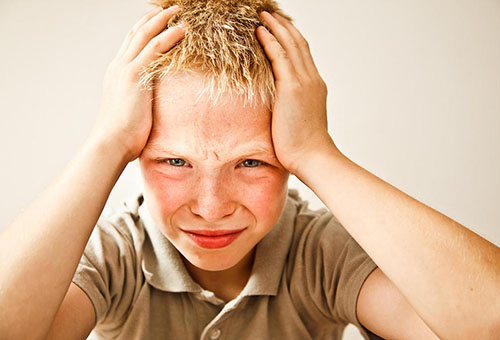
If a bump jumped
So, you begin a visual inspection of the affected baby and stumble upon a bump. What to do?
Apply a cold object to the injury as soon as possible. It can be any product from the freezer, a bottle of ice water Or just a cold compress. It would be useful to disinfect the object that you are going to apply to the sore spot in advance.
The compress should be kept for at least 3 minutes. Try to persuade the child to sit quietly this time and not to spin.
- pediatrician - he will conduct an initial examination and prescribe ointments and remedies for bumps (hematomas);
- ophthalmologist - will make sure that the blow does not give complications to vision;
- surgeon - will conduct a more detailed examination, may prescribe an ultrasound of the brain, tomography and other studies, tell you what to do next.
If a traumatic brain injury is not detected, only external remedies for bumps and bruises will be enough.

If there is an abrasion on the head
The wound from which there is blood, says that when the child hit his head, he received a bruise of the soft tissues. As a rule, such an injury is not serious (unlike a bump, which can be a sign of internal damage) and passes quickly, but there are exceptions.
If the baby is bleeding...
- Apply a disinfectant (such as hydrogen peroxide) to disinfect the wound and stop bleeding.
- Provide your child with peace and relaxation.
- If after 7-10 minutes the wound continues to bleed, consult a doctor, or rather call an ambulance.
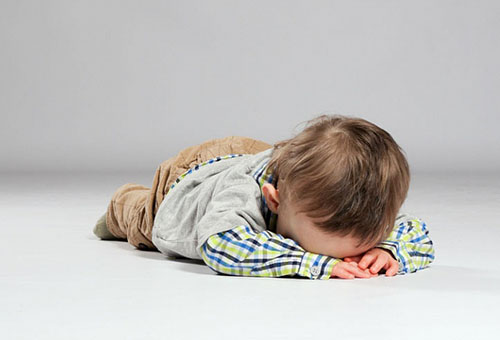
If the child is unconscious
The child fell and hit his head, while he lost consciousness. What to do? In this case, there can be only one recommendation: immediately call a team of doctors!
While the ambulance is on its way, gently lay the baby on its side and stay close to him until the specialists arrive. Do not let the child roll over onto its back. If vomiting starts, in this position the child can easily choke on vomit.
Losing consciousness after a fall and a hard blow to the head can be a sign of a concussion. An accurate diagnosis will be made by a doctor. But there are symptoms by which you can assess the severity of the situation.
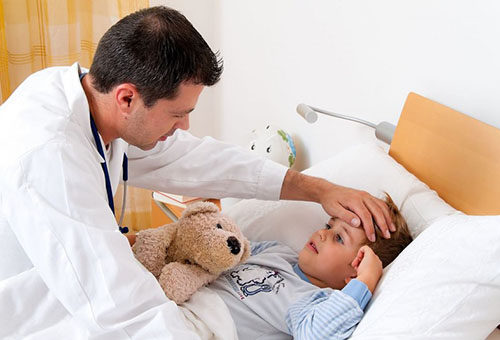
Signs of a concussion
Concussion in children is quite difficult to recognize, so it is often detected only a few days after the fall. Here are its symptoms:
- the child is lethargic, drowsy and apathetic;
- the crumbs have a loss of appetite;
- concussion can cause sleep disturbance;
- frequent headaches that began after a fall;
- the child is sick;
- the baby of the first months of life becomes whiny, hardly sleeps or, conversely, sleeps a lot.

When should you go to the doctor?
It happens that everything looks normal - the baby has no hematomas, no abrasions, or other negative manifestations of a recent fall. But things may not be so smooth. What to do? After the fall, watch the child. If you have at least a few of the symptoms below, do not put off going to the doctor.
- Loss of consciousness.
- Drowsiness, confusion, lethargy.
- Pulse failure.
- Loss of appetite.
- Vomit.
- Diarrhea with blood.
- Increasing moodiness, tearfulness.
- Pupils of unusual size (dilated or constricted).
- Dark spots under the eyes and behind the ears.
- Other deviations in behavior.
Conclusion
Every parent should know what to do with a head injury. Not only the health of the child, but often his life depends on the correctness and efficiency of your actions.
But don't panic too much. Often falls from a height pass without consequences for the baby.
